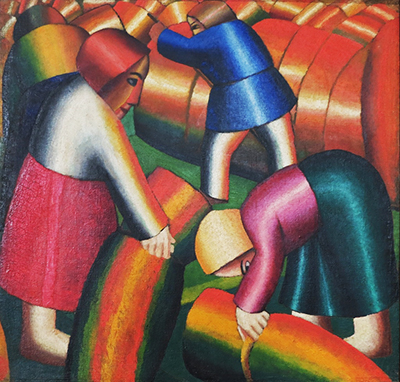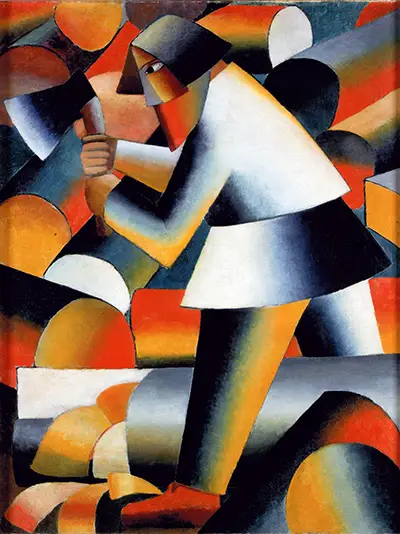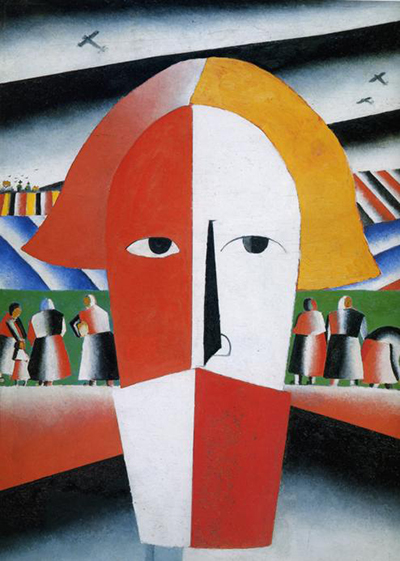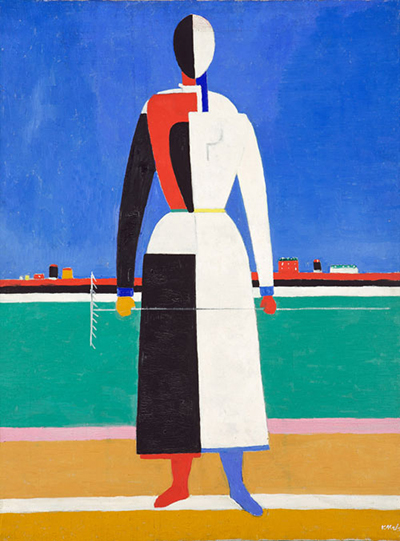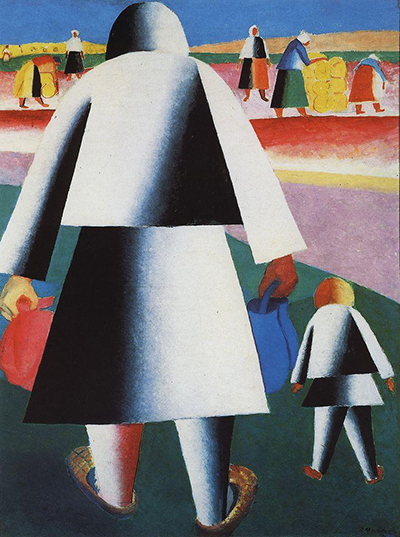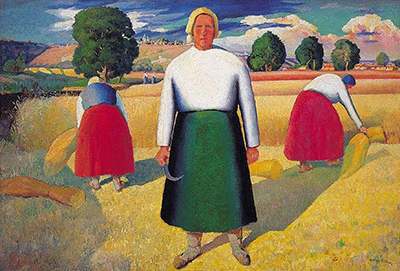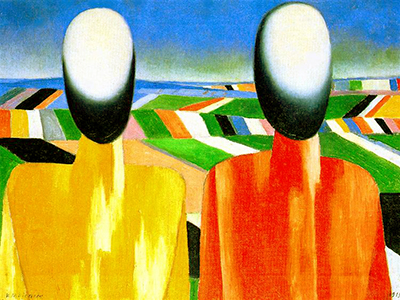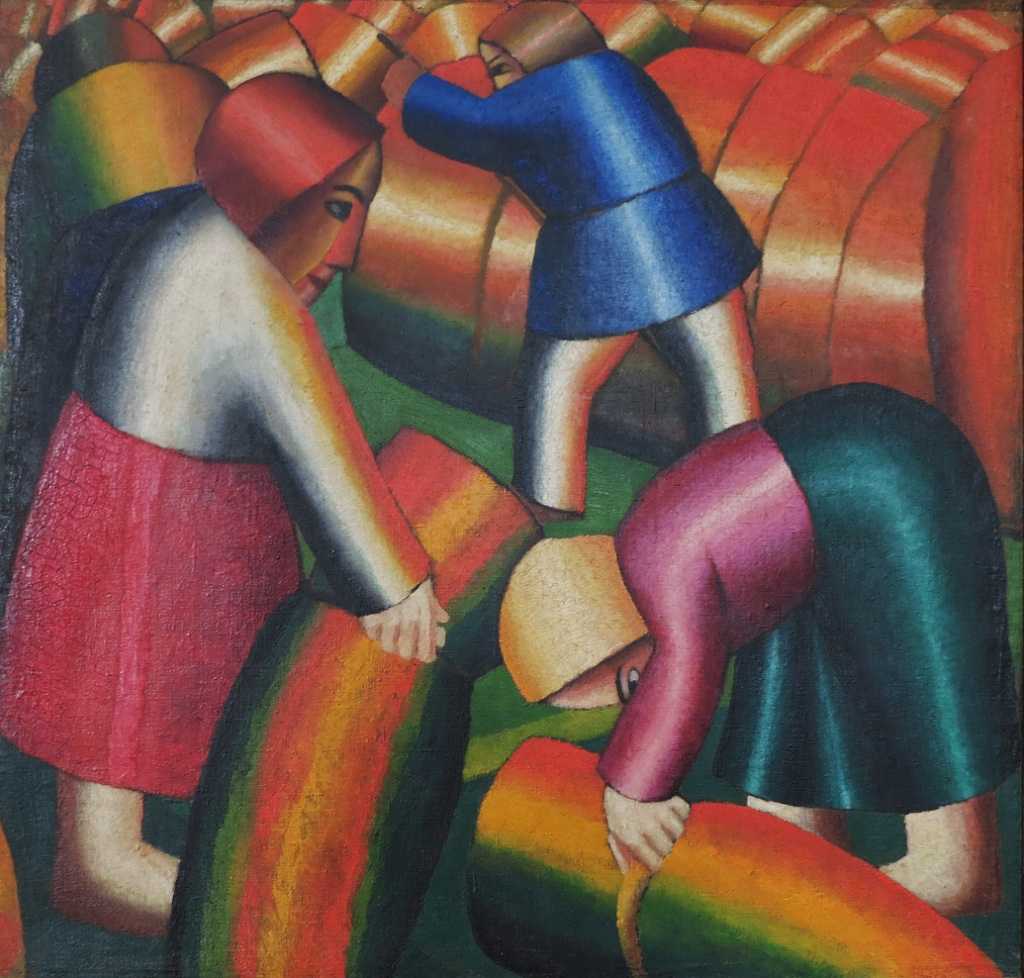Taking in the Rye is one of a series of paintings constructed by Kazimir Malevich that capture the lives of working peasants in what was then known as the Russian Empire.
Description
The composition in front of us features four farm workers busily 'taking in the rye'. The setting would have been the artist's native region and it is dated at 1912, at which point the artist would have been in his mid thirties. The traditional lives of these figures is contrasted with the contemporary style used by the artist, with his bands of bright colour being particularly memorable. The painting is now to be found at the Stedelijk Museum Amsterdam, where several related artists are also featured, such as Wassily Kandinsky, Ernst Ludwig Kirchner and Marc Chagall. They also own Woodcutter (1912–13) by Kazimir Malevich. The artist himself was born in Kiev, modern-day Ukraine, in 1879.
Peasant Life in Art
Malevich was by no means the only famous artist to have concentrated on the lives of the poor, even though they would not have been in a position to offer large payments for any portraits. It was clearly more about artistic expression and using them as a source of inspiration. Other artists went down the route of producing portraits of the rich and famous in order to supplement their incomes and also build up a strong network of powerful connections. One cannot summarise all famous artists just with one caricature - for some would work exclusively for their creative freedom, whilst others would use their popularity for other purposes, whilst many would also do a little bit of both.
Potato Eaters by Vincent van Gogh was his very first masterpiece and also has become perhaps the most famous depiction of the poor within European art. The artist himself was from a poor background and had a considerable struggle throughout most of his life. His dark colour scheme perfectly captured the challenging lives experienced by these local Dutch workers. In comparison, Pieter Bruegel had many centuries earlier displayed peasant life in a much more upbeat manner, covering festivals and other joyous occasions. See Peasant Wedding and Peasant Dance for just two examples of this, from the many available. There are also many examples of socialist art in which the agricultural workers are seen as the heart of the nation, promoted as heroes who keep the country fed and healthy. These images would often appear within poster art, helping to build pride in the nation state, despite the real problems that many might have been experiencing at the time.
Location
Taking in the Rye can be found at the Stedelijk Museum in Amsterdam, Netherlands. It is just one of many artworks by Malevich to be found here, and they hold a particularly impressive selection of drawings from his career. The institution itself focuses on modern art movements, dating back to the early 20th century. Malevich would become a major influence on many of the other names featured within the gallery, and so the inclusion of some of his own work is very much necessary. The Stedelijk Museum actually list this piece under the name of Oogstende vrouwen/Het binnenhalen van de rogge II and in some other places it is known as Taking in the Harvest II, suggesting that this was the second iteration of a 1912 series.
Size and Medium
The painting itself is almost square in dimension, measuring 72 cm (28.3 in) in height and 74.5 cm in width. The artist regularly produced fairly small artworks and would even exhibit them together on the same wall. Some of his more abstract pieces were even smaller than this. Due to the abstract, reduced detail within many of his artworks, there was not always a need to use over-sized canvases and smaller pieces were also easier for the artist to transport around when on his various trips to western Europe. Some would eventually be left in Germany for their own safety, as the artist suspected that local authorities would clamp down on his contemporary artistic style - sadly, he was entirely right.
Related Artworks
Kazimir Malevich focused on the working peasants of his local community many times across his career, continually returning to the theme even as he evolved his artistic style. Even the artwork displayed here was actually the second in a series known as Taking in the Rye, and we have included a selection of some of the others below. The artist remains most famous today for his even more abstract scenes, where any connection to reality is entirely lost, but there is still a strong interest in his series of peasant portraits. To Kazimir, these individuals represented life in the Russian Empire, the common man, and that their experiences reflected the overall progress of society. They were responsible for generating food for the masses, and despite their difficult lives, the nation understood the importance of their role, particularly within socialist propgaganda and poster art.
Large Image of Taking in the Rye
See below for a larger image of the painting from 1912.



